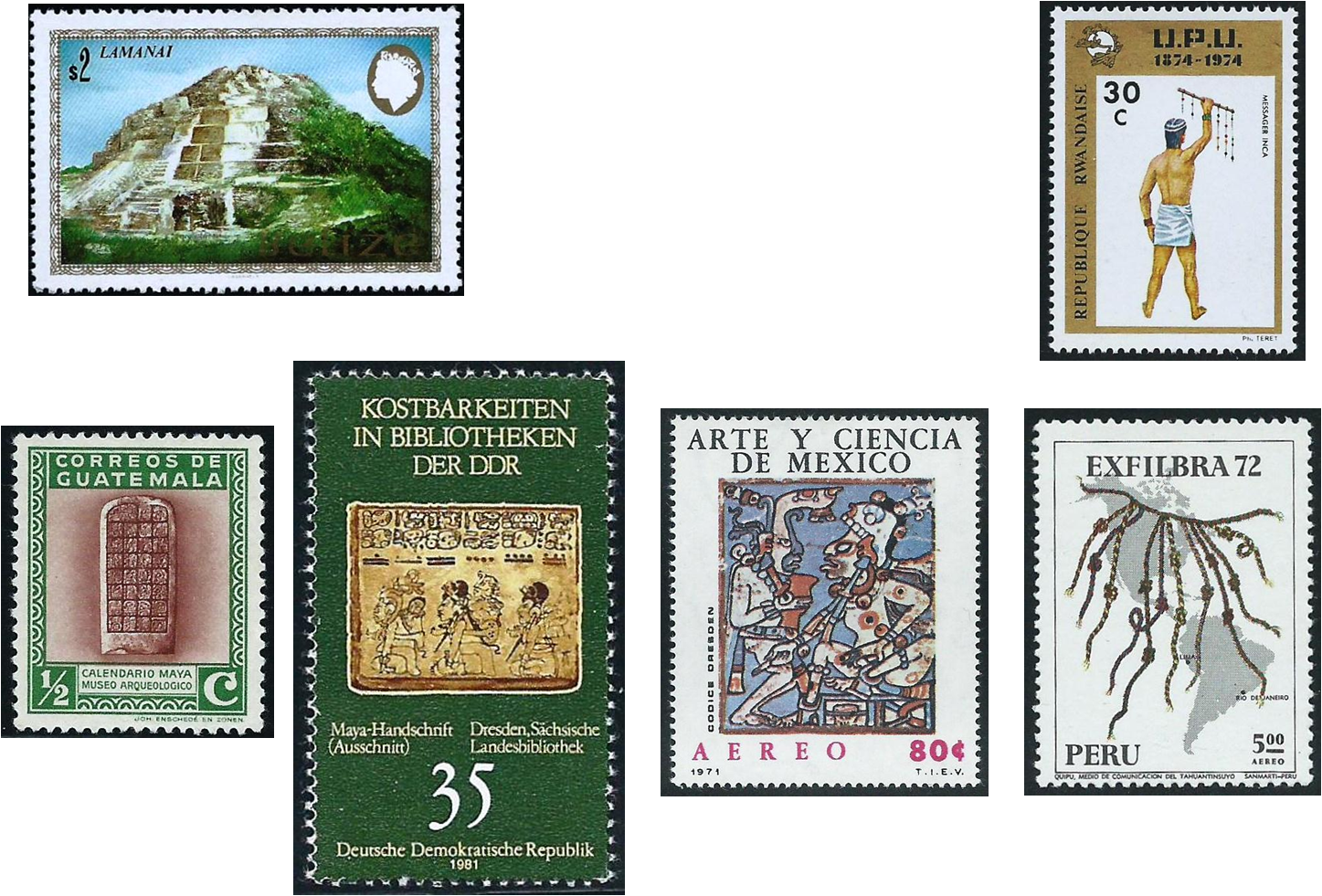Mayas and Incas
One of the most interesting counting systems is that of the Mayans of Central America (Mexico, Guatemala, Belize, El Salvador and Honduras), between AD 300 and 1000. Based on the numbers 20 and 18, it was a place-value system composed of symbols for 1 and 5 (combined to give numbers up to 19) and 0.
Most of their mathematical calculations involved the measurement of time. They used two calendars: a 260-day ritual calendar with 13 cycles of 20 days, and a 365-day calendar with 18 months of 20 days and five extra days. Combining these calendars gave a long ‘calendar-round’ of lcm (260, 365) = 18,980 days.
Our knowledge of the Mayans’ counting system and of their calendars is derived mainly from hieroglyphic inscriptions on carved pillars (stelae), writings on the walls of caves and ruins, and a handful of painted manuscripts. The most notable of these manuscripts is the beautiful Dresden codex, dating from around the year 1200. Painted in colour on a long strip of glazed fig-tree bark, it contains many examples of Mayan numbers.
Around the year 1500 the Incas of Peru, two thousand miles further south, invented the quipu for recording and conveying numbers and other statistical information. It consists of a main cord to which many thinner knotted cords of various colours are attached; the size and position of each knot correspond to a different number in a decimal system, and the colours convey different types of information. Quipus were used for accounting purposes and for recording other types of numerical data. The information was carried around the region by teams of Inca messengers, trained runners who could cover large distances in a day.
[Belize, 1983; East Germany, 1981; Guatemala, 1939; Mexico, 1971; Peru, 1972; Rwanda, 1974]
Published/edited: 13/09/2015
